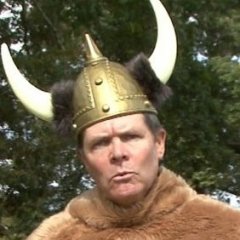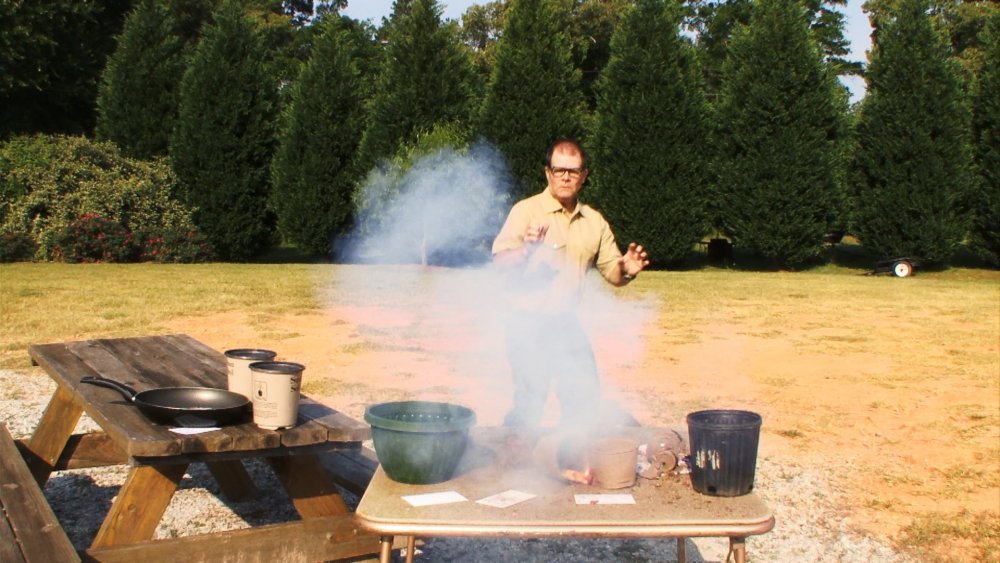Retro-ism: An Experiment in Sustainable Golf Ops
After several years of toiling on bentgrass plantations in Hotlanta, enduring ever increasing grooming standards and shrinking HOC on fairways, greens and tees, I decided what I was doing was unsustainable. That led me to choose a more sustainable path, something I could maintain for the long run, not just a short burst of intense activity.
NOTE: I am using the word “Sustainable” in the sense of an activity that is capable of being sustained, not as a code word for ecological balance. More like, “I could not sustain a grapefruit diet or an intense exercise program I ordered off late night TV.”
1991: In what was to become the early phase of Skeletal Golf Theory, I took over a small golf course with the intent of testing a few methods to counteract the trend of increasing maintenance costs and career stress . . . by conducting an experiment. The parameters of the experiment were simple:
First, go back to bermuda greens. The Ultra Dwarf bermudas were not to appear for several years, but the plan was to use one of the new PGRs, in an attempt to give 328 more WSR Factor. (Won’t Stop Rolling) Also, I wanted to test the new “baked dry sand” top dressing, in light but very frequent apps, and use the new Hydroject to reduce core-yanking events.
The plan would use Poa Trivialis as winter overseed, rely heavily on soil testing—and a soil test cryptographer who could actually interpret the test for me. I also wanted to minimize wetting agents, as I had detected an increase in disease pressure on bent whenever I upped the usage of wetting agents. (These were probably first gen agents, so stop your howling.)
The other aspects of the plan included mass tree removal, installing wildflower and broomsedge areas to reduce rotary mower hours, and keeping the crew Skeletal: Just me, an assistant, an EM, one crewmember, and a part-timer of the high school specie. (That last part was worrisome—I was afraid I might get some kid like me.) Fairways would be mowed wall to wall at 5/8”—with a five-gang—again reducing the amount of area requiring rotary attention. Tees and everything but greens, would get the five-gang treatment. Every unnecessary, high-flashed bunker would be inverted and sodded over.
There were architectural adjustments, like widening the landing zones and making the course play dryer, in order to allow for more ground game. Catch mounds were positioned where balls liked to roll into water, and a few holes were lengthened to get the yardage up from 5200 yards to 5600. (I also practiced speaking like a long dead Scottish architect.)
Finally, I took over the club’s advertising, running ads in the newspaper, with the magic phrase, “$10 Golf!” That was the weekday walking rate and I knew not a single golfer would walk, but hey, it was advertising. We got good reviews, a magazine tagged us "a hidden gem" and the course played pretty well. Rounds went up 400%, making everybody but the pro shop happy. (They were used to the Floyd’s Barbershop pace, not something akin to the floor of the NYSE.)
After six months, the numbers fell off; when I took a few informal, unscientific surveys, I discovered one consistent golfer complaint: “The course was too short!” (Not too short on the ground, just in their heads.)
. . . added 600 mythical yards and 5600 became 6200.
They pointed to that 5600 number on the scorecard and implied the course was somehow weak and pitiful, more suited for unskilled hackers, duffers and beginners. Of course, that’s exactly what these people were, but some delusional idea planted in their soft skulls by TV, told them they needed 7000 yard Championship golf.
I lengthened the finishing hole, a weird par 3, into a long par 4, added 600 mythical yards to the scorecard and 5600 yards became 6200. Before long, things were rolling again. The moral of the story? Golfers enjoy playing a short course where they can score, all while thinking they are playing a long, tough course.
Oh, and as to the success of the experiment? Tif-Eagle came along and made my PGR Bermuda obsolete. The Skeleton crew concept worked for a while, but the crew size was unsustainable in the long run. (Golfers still demanded TV conditions for their $20.)
The mowing plan worked great, as did the De-Bunkerizing and the Hydroject concept. However, my plan was not sustainable because I did not allow for unexpected interactions with an abrasive, fairly combative member of the team of owners. (Clubhouse dweller.)
On the bright side, we did manage to kill off a high dollar competitor who built down the road from us and condescendingly assured us they didn’t covet any of our kinds of customers.
Years later, when I built a golf course using all the Skeletal Golf Theory techniques—except for a simple irrigation system—the course worked very well. It was sustainable, at least until ownership decided they didn’t need a golf course superintendent.
That’s one theory that's not sustainable.
-
 1
1



2 Comments
Recommended Comments